Art can transform us—it creates conversations and cultural bridges, connecting us to the past as we reflect in the present, and it even inspires us for the future.
Museums are not just places that merely house art—they are the heart of history and human creativity, giving everyone the chance to learn and celebrate timeless pieces, from floor-to-ceiling canvases to ornate gold frames that are works of art in their own right.
Remitly knows how important art and its accessibility are for the world to connect and be inspired. So in true Remitly fashion, we’ve put together a guide to the world’s most celebrated museums and art galleries, exploring history and giving tips for your visits so that you can experience history firsthand.
The Metropolitan Museum of Art, New York: A global, cultural crown jewel
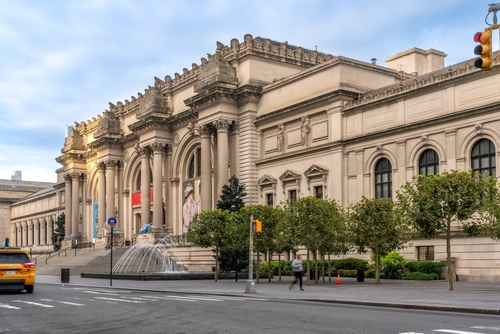
Nicknamed simply “The Met,”—not to be confused with the other Met in New York City (Metropolitan Opera)—this New York institution attracts visitors from all over the world to roam its halls filled with over 5,000 years of art.
The museum has something for everyone, even those just starting their art appreciation journey—from Egyptian artifacts to modern American masterpieces, you’ll also find yearly exhibitions on famous fashion pieces in collaboration with Vogue Magazine and the Met Gala.
Iconic collections that span the globe
With the vast amount of art on display, it can be hard to choose, but we’re going to zoom in on three specific wings to help narrow things down:
- The Egyptian Wing: Home to the Temple of Dendur, created originally in honor of the goddess Isis. The temple has been reconstructed inside the Met and is displayed along with over 30,000 Egyptian artifacts.
- The American Wing: Spanning over three floors, this wing features all types of art mediums, from paintings to ceramics and even jewelry, highlighting Black, Native, and South American art through the centuries.
- European Paintings: Klimt, Degas, and Rembrandt are just a few of the artists featured among the 2,500 works of art on display from the thirteenth century to the twentieth.
A medieval world at The Met Cloisters
If you’re looking for more Middle Age focused art, you’re in luck, because the Met Cloisters, located at the tip of Manhattan, makes you feel like you’ve been transported to another world.
With paths leading up to a magnificent stone building, the Met Cloisters is dedicated to medieval art and even has free tours for those who make the trek up to this branch of the museum.
The Met’s mission of accessibility
While international visitors must pay the set entry fee, residents of New York and students within the tri-state area (New York, New Jersey, and Connecticut) can participate in their pay-what-you-wish program. You must pay something, even if it’s just a dollar, but you don’t have to pay the full admission amount to enter.
Pay-as-you-wish keeps the Met accessible for residents in a city whose prices and rent continue to rise each year, ensuring that patrons continue to have access to cultural landmarks that make the city of New York so wonderful.
The Louvre Museum, Paris: Home to timeless treasures
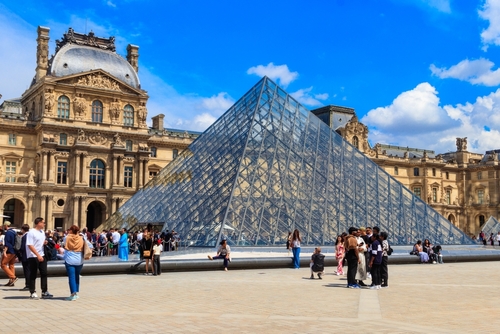
The Louvre isn’t just a museum—it’s a world of its own. Once a fortress and then a royal residence, this Parisian landmark was opened as an art museum by the French Revolutionary government in 1793.
The Louvre’s history is not only the artwork it houses inside its walls, but the building itself, making it a truly fascinating place to explore.
Masterpieces everyone wants to see
There’s almost too much to see at the Louvre, so consider having a list of must-sees to help narrow things down and make the best use of your time.
A few masterpieces that draw the biggest crowds:
- Mona Lisa: The smile, or sort of smile, that draws millions of visitors each year, is protected behind glass and ropes to keep the crowds at bay.
- Venus de Milo: A gift to King Louis XVIII, the king donated it to the Louvre in 1821, and it’s been a highlight ever since.
- Winged Victory of Samothrace: One of the most famous sculptures in the museum, it sits atop the Daru staircase, making it a sight to be seen.
Hidden corners most visitors miss
While most visitors flock to the more famous and well-known works of art, the Louvre is vast, and hidden gems are tucked away in different corners that most people overlook.
If you want to see more than just the Mona Lisa, consider taking a tour or hiring a guide to make the most of your visit. You’ll still see all the hits, but you’ll also have the opportunity to discover lesser-known works and learn their stories.
The apartments of Napoleon III or the Egyptian antiquities might be the highlights you were searching for. While Mona Lisa’s sly smile is definitely a sight to see, don’t let the other amazing pieces of art pass you by.
Smart tips for navigating the Louvre
Consider planning well before your visit to avoid getting swept away in the crowds. The Louvre is enormous, but the number of people passing through each day can make it feel quite cramped at times.
Planning is key to having an enjoyable and memorable time.
- Book tickets in advance on the museum’s official website.
- Dedicate at least half a day to see at least the highlights.
- And here’s the best tip we’ve found—enter via the Carrousel du Louvre, the underground entrance, to avoid those long lines.
The British Museum, London: A gateway to human history
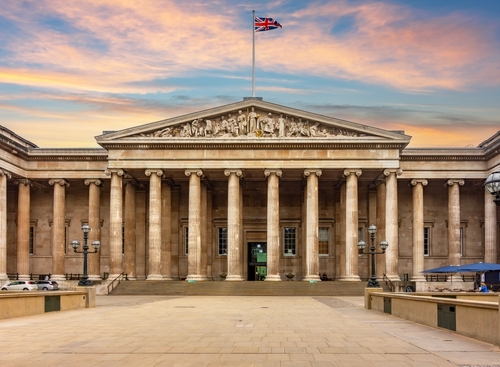
If there’s any place that is steeped in history, it’s London—and the British Museum spans that history, showcasing art and artifacts from almost every corner of human civilization.
While there is currently quite a bit of pushback for the British Museum to return some of its pieces, such as the Elgin Marbles and the Benin Bronzes, the museum continues to work diligently in preserving its art and artifacts, ensuring their stories live on.
The artifacts that shaped our understanding of the world
Ancient stones and sculptures make you feel like you’ve stepped back in time. The British Museum has one of the world’s finest collections of art throughout history, but if you want to make sure you see some of the most incredible, don’t miss the highlights:
- Rosetta Stone: This granite slab was the key to deciphering Egyptian hieroglyphs.
- Parthenon Sculptures: Once part of the Parthenon in Athens, these marble works show scenes of gods, battles, and mythological figures in remarkable detail.
- Crouching Venus: A Roman marble statue inspired by Greek originals, it depicts the goddess Venus caught in a rare moment of modesty.
Why free admission matters for culture
As the British Museum is one of the most visited museums in the world, you might be surprised to find that admission to such a large and incredible institution is completely free.
The free admission was put in place in 1759, and the museum continues to welcome visitors from all across the world and from every background to experience the history it holds.
Keeping the museum free means that support comes from other places, such as donations, patronage, and organizations like the American Friends of the British Museum.
Vatican Museums, Vatican City: spirituality meets art
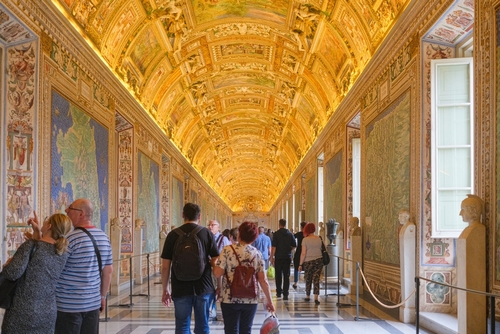
The Vatican Museums are unrivaled when it comes to experiencing spirituality through art. Michelangelo’s masterpiece, high up on the Sistine Chapel ceiling, is a testament to the human spirit and creativity.
Gloriously breathtaking highlights
The Vatican brings together art, faith, and creativity that is unmatched by most other museums. The rooms all connect, and you’ll find your eyes darting up, down, and sideways to catch all the beauty the museum has to offer.
- Sistine Chapel: Michelangelo’s famous ceiling painting is one of the best-known and most celebrated works of Western art.
- Raphael Rooms: Papal apartments decorated by the artist Raphael and his workshop.
- Classical sculptures: The Vatican’s sculpture collection is one of the richest in the world.
Tips for experiencing the Vatican stress-free
The Vatican Museums offer a unique experience, and since they blend faith and art in one cultural space, they require visitors to dress modestly to show respect for this sacred space.
Booking online and visiting in the early mornings can help you avoid the crowds and peacefully walk through the halls that were painstakingly crafted for popes, patrons, and the pious.
Uffizi Gallery, Florence: Renaissance art’s sacred home
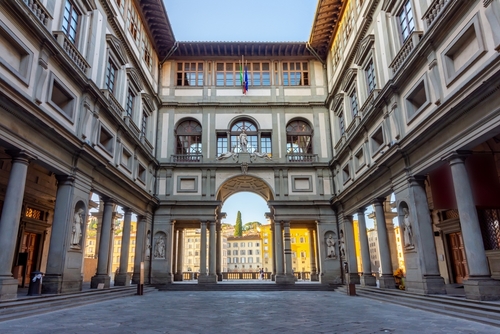
Florence, Italy, is not only known to be one of the most beautiful cities in the country and the epicenter of the art world—it’s also known as the birthplace of the Renaissance.
The Uffizi Gallery is one of the world’s most beautiful museums and one of the best museums to visit in Europe. It houses paintings from the Middle Ages all the way to the modern period, which means there is something for everyone to enjoy.
The epitome of Renaissance art
Some of the greatest masterpieces by the most renowned painters are found in Florence, and if you want a chance to see many of the greats in one place, the Uffizi is not to be missed.
Some of the most prolific pieces of art on display can be found in the museum:
- Botticelli’s Birth of Venus and Primavera: These are two of the most iconic paintings of the Italian Renaissance.
- Leonardo da Vinci’s Annunciation: This early da Vinci painting shows his mastery of perspective and detail.
- Michelangelo’s Holy Family: His only surviving panel painting is notable for its dynamic figures and sculptural style.
Tips for visiting the Uffizi
Because the Uffizi is in such high demand, booking ahead is encouraged so you don’t miss out on this Florence treasure. Evening visits will also allow you to experience the beautiful Tuscan light streaming into the gallery windows, enhancing your experience even more.
The Prado Museum, Madrid: Spanish masters at their finest
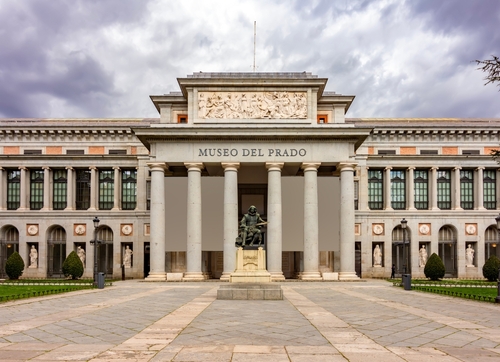
Madrid, Spain, is brimming with museums, small and large, but none of them as grand or famous as the Prado (though that doesn’t mean they’re not worth seeing—the Museo del Romanticismo is a small gem in the center of the city!).
The Prado collection of Spanish and European masterpieces is the first royal museum in Spain that saw Pablo Picasso himself as the director in 1936. However, he never actually worked in the position; he just accepted the title.
The history of this museum, whose name means “lawn” or “meadow,” stretches beyond its paintings, holding history and the genius of some of the most prolific artists throughout the centuries.
Velázquez, Goya, and the heart of Spanish art
You could wander the museum for an entire afternoon and still wonder if you’ve seen everything. With over 8,000 pieces of art, there’s almost too much beauty to see—if that’s possible.
So if you’re not sure where to start, we’ve got a few suggestions for you!
- Las Meninas by Velázquez: A masterpiece of perspective and intrigue showing the young Infanta Margaret Theresa surrounded by her attendants.
- Goya’s Black Paintings: These dark, haunting works were painted directly on the walls of the artist’s home before being transferred to canvas after his death.
- David and Goliath by Caravaggio: This striking Baroque painting shows the young David triumphing over the giant, showcasing the artist’s dramatic use of light and shadow.
What’s new at the Prado and when to see it
The Prado is constantly adding new and special exhibitions to view alongside their main collection.
A current exhibition running through spring of 2026 highlights the work of Juan Muñoz, whose art references both the Renaissance and Baroque periods.
The museum even keeps its doors open now seven days a week and for most holidays, giving everyone the chance to experience the museum when visiting Madrid, even if they are short on time.
Planning your cultural journey
Whether you’re just starting to appreciate the world of art or you’re a seasoned museum visitor, any museum trip can be made better with just a little bit of planning.
Practical tips:
- Book tickets online to help save time and avoid long lines.
- Go early or later in the day to avoid crowds (but remember, most museums will stop allowing entry 30 minutes before closing time).
- Join guided tours to see hidden gems that are often missed.
- Download museum apps—many now offer interactive maps and self-guided tours.
If you’re on a budget, there are plenty of ways to see beautiful art that won’t break the bank.
City passes, such as the Paris Museum Pass, often include multiple museum entries, giving you access to a wealth of collections and history throughout the city.
You can also take advantage of free admission days or hours that some museums offer (like the Prado), or even explore virtual tours if traveling is currently not an option.
There are many ways to experience art these days, and not all of them involve flying on a plane or taking a train to a larger city. So if you’re looking to broaden your horizons and learn more about other cultures, museums are a fantastic place to start.
Accessible art for everyone to explore
From Paris to New York, every museum or gallery tells pieces of our shared history across the globe. Museums are not merely tourist stops—they hold so much history and proof of what we as humans are capable of.
And while international travel is sometimes not an option, supporting your local museums is a perfect place to start! Even small museums hold gems and feature incredible collections, sometimes on loan from larger institutions. Virtual tours are also becoming increasingly available, making it easier than ever before to access artwork without leaving your home.
Art is something that connects us, and luckily, we now live in a world where it’s accessible to all.
FAQs
How much time should I plan for each major museum?
For a museum like the Louvre, at least half a day is needed to even scratch the surface of all the art and history on display, not to mention the lines to get through the entrance door. For most major museums, allow yourself at least a few hours to make sure you hit the highlights.
Are there free admission days at famous museums?
Many museums, like the Prado, offer evening hours during the week where admission is free to make the museum more accessible for those on a budget. The British Museum is completely free to enter, and the Met also has a pay-as-you-wish program for New York residents and students from the tri-state area.
What’s the best way to appreciate art without formal training?
Start by visiting major institutions like the Louvre or the Met. Their collections are so diverse that you’re bound to find pieces that resonate with you, regardless of background or training.